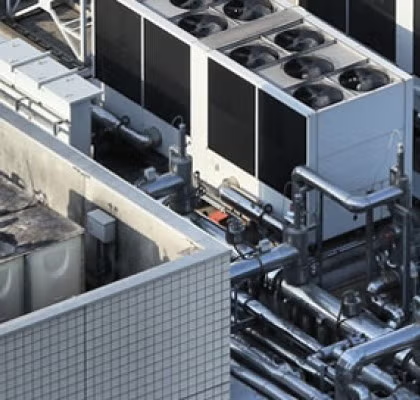HVAC Preventive Maintenance Checklist

HVAC equipment is mechanical and mechanical equipment can fail. A well planned preventative maintenance schedule provides a proactive versus reactive approach to HVAC maintenance, which means you can avoid most problems before they occur. Armed with a comprehensive maintenance checklist, you can successfully schedule, accomplish and document maintenance procedures and not worry that you've missed a major component of equipment care.
The first step in developing your checklist is to make a physical inventory of the equipment and systems you're responsible for maintaining. Record essential data for each piece of equipment: manufacturer, model number, specifications, date manufactured and function in the system.
After the inventory is complete, list the preventative maintenance required for each piece on your inventory and determine the frequency. By grouping the tasks together by system and then by frequency, you create a checklist to refer to each year.
We particularly like the checklist published in 2009 by Buildings Magazine. They offer a detailed schedule of preventive maintenance procedures, for commercial building systems and components, including roofing, HVAC, plumbing, lighting and other systems. You can view the entire checklist here. We've summarized the HVAC portion below:
- Inspect your HVAC system at least twice yearly, around the time of seasonal system start-up.
- Chillers and Boilers: Seasonal chiller and boiler maintenance requires expertise; industry best practice is to use the services of a qualified mechanical contractor.
- Cooling Towers: Disassemble screens and access panels for inspection. Inspect all tower components, including the fill and fill valve, support structure, sump and spray nozzles, gear box, drive coupling, fan blades and motor bearing. Clean the starter and cabinet. Inspect wiring, and check the motor starter contacts for wear and proper operation. Megger test the motor and log readings. Check the condition of the sump heater and contractor.
- Pumps: Lubricate bearings at least annually. Inspect couplings and check for leaks. Listen for any unusual noises, and determine the cause.
- Air-handling Unit: Clean, or replace, air filters at least quarterly, based on condition. Also, look for signs of mold in your HVAC system and take care of them, immediately. Don't only clean and kill the mold, but apply a mold inhibitor, like BBJ Mold Control. This will control mold growth and can be applied while the building is occupied. Clearing the system of mold can eliminate floods from condensate pan clogs and loss of efficiency on the coils.



